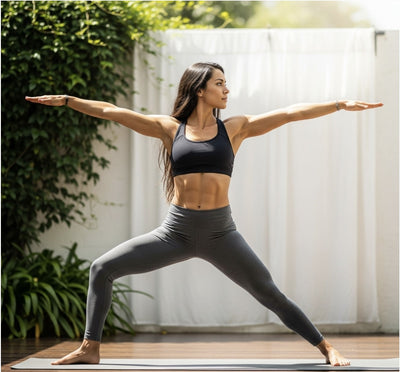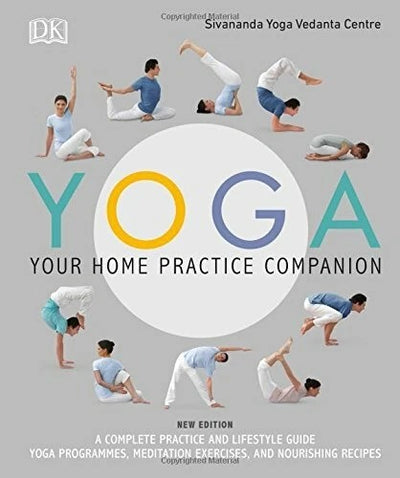
Power Yoga Workouts for Building Core Strength - 5To9Style
Share
Power Yoga Workouts for Building Core Strength
Forge Your Center: Power Yoga Workouts for Building Core Strength
In the world of fitness and well-being, a strong core is universally recognized as the foundation of all movement, balance, and stability. While many associate core training with crunches and sit-ups, Power Yoga offers a dynamic, holistic, and incredibly effective approach to building core strength. This athletic yoga style, known for its vigorous Vinyasa flow and challenging postures, integrates core engagement into every movement, transforming your entire practice into a powerful core workout.
If you're looking to enhance your physical performance, prevent injuries, or simply feel more grounded and stable in your daily life, Power Yoga workouts provide an invigorating path to a powerful core.
1. Why Core Strength Matters in Yoga (and Life)
Your "core" isn't just your abdominal muscles; it's a complex system of muscles that includes your abdominals, obliques, lower back, pelvic floor, and diaphragm. These muscles work together to stabilize your spine, transfer power between your upper and lower body, and maintain balance.

In Power Yoga, a strong core is essential because it:
- Protects Your Spine: A stable core acts as a natural corset, safeguarding your lower back from strain and injury, especially in twists and bends.
- Improves Balance: Almost every balance pose relies on a strong, engaged core to maintain equilibrium.
- Enhances Pose Stability: From Plank to Handstand, a powerful core provides the stability needed to hold challenging postures with ease and control.
- Increases Power Transfer: A strong core allows for efficient transfer of energy throughout your body, making movements more powerful and fluid, both on and off the yoga mat.
- Boosts Overall Fitness: A robust core improves performance in all physical activities, from running to weightlifting.
2. Power Yoga Poses for Core Engagement
Power Yoga seamlessly weaves core work into virtually every posture and transition. Here are some fundamental poses that actively engage your core:
- Plank Pose (Phalakasana): The ultimate core stabilizer. In Power Yoga, you'll hold Plank for sustained periods and move through it dynamically in Vinyasas. Keep your body in one straight line from head to heels, drawing your navel toward your spine.
- Chaturanga Dandasana (Four-Limbed Staff Pose): The transition from Plank, requiring immense core control to keep your body straight as you lower down. It's a key part of the Power Yoga flow.
- Navasana (Boat Pose): A classic core blaster. Lift your chest and legs to form a "V" shape, drawing your lower belly in to support your spine. Variations include bending knees or extending arms.
- Side Plank (Vasisthasana): Challenges the obliques and builds shoulder stability. Stack your feet and lift your hips high, engaging your side body.
- Warrior III (Virabhadrasana III): A powerful standing balance pose that requires intense core engagement to keep your torso stable as you extend your leg back.
- Knee-to-Nose (from Downward-Facing Dog or Plank): A dynamic move that fires up the lower abdominals as you round your spine and draw one knee towards your nose.

3. Integrating Core Work into Your Flow
The true power of Power Yoga lies in its continuous Vinyasa flow. Core engagement isn't just in isolated poses; it's active in every transition.
- Breath and Bandhas: Use your Ujjayi breath to activate your Bandhas (energy locks), especially Uddiyana Bandha (abdominal lock) and Mula Bandha (root lock). These internal engagements draw energy inward and upward, stabilizing the core from within.
- Mindful Transitions: Pay attention to how you move between poses. For instance, in Sun Salutations, consciously engage your core as you jump back to Plank or float forward to a standing pose. This mindful movement transforms every transition into a mini-core exercise.
- Listen to Your Body: While Power Yoga is challenging, always honor your body's limits. Modifications, like dropping knees in Plank or Chaturanga, are always available and equally effective for building strength safely. Using a non-slip yoga mat ensures stability during these powerful movements.
4. Beyond the Core: Holistic Benefits
Consistent Power Yoga practice for core strength offers far-reaching benefits:
- Reduced Back Pain: A strong core provides essential support for the spine, often alleviating and preventing lower back pain.
- Improved Posture: A robust core helps you stand and sit taller, with greater ease and confidence.
- Enhanced Athletic Performance: Core strength is foundational for most sports and physical activities, boosting power, agility, and endurance.
- Increased Body Awareness: The focused attention required builds a deeper connection to your physical self and how your core supports all movement.
- Mental Resilience: Pushing through challenging sequences builds mental toughness, discipline, and the ability to stay focused under exertion.

Power Yoga workouts offer a comprehensive approach to building core strength, integrating it seamlessly into a dynamic and invigorating yoga practice. It's a journey that strengthens your body from the inside out, leading to greater stability, power, and overall well-being.
Ignite Your Core with Power Yoga
Ready to transform your body and build incredible core strength with dynamic Power Yoga workouts? Embrace this invigorating practice to enhance your stability, balance, and overall fitness. For high-performance yoga mats and comfortable, sweat-wicking yoga wear designed for powerful movement, explore our full collection at https://5to9style.com/collections/all.
Forge your center and unleash your inner power today. Visit our homepage for more insights and to discover products that align with your active, mindful lifestyle: https://5to9style.com.








